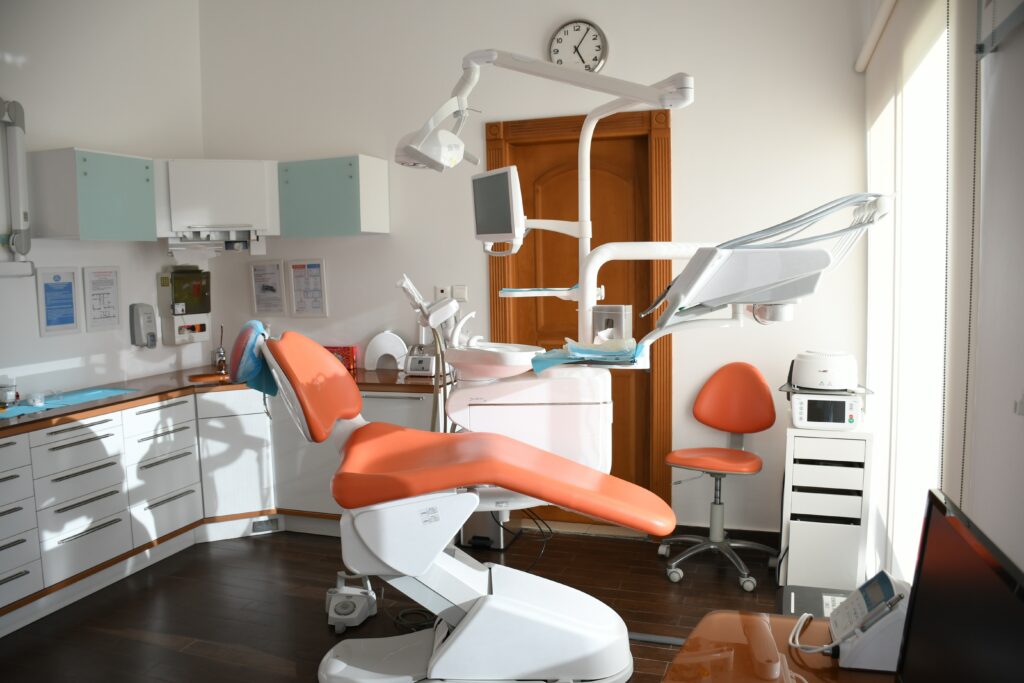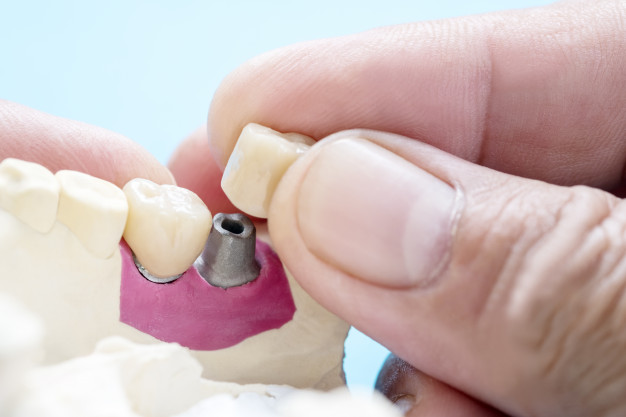
Dental crown
What problem does it solve?
Dental crowns are ideal to strengthen and protect teeth which have lost their original function and structure due to severe decay or trauma. Crowns cover the entire tooth right down to the gum line therefore great solutions to protect root canal treated teeth which otherwise would become fragile over time. Crowns are also used to replace missing teeth and as the final step of implantation to build up the visible part of the tooth.
Duration of the treatment:
The whole process requires 2-3 occasions, each takes about 30-60 minutes
Costs of the treatment:
Panoramic X-ray – (8.000 HUF)
Oral hygiene treatment – (from 15.000 HUF)
Metal based crown – (55.000 HUF)
Metal free zirconium crown – (from 99.000 HUF)
Dental crowns are the traditional way to replace missing, broken, damaged or heavily decayed teeth. Crowns can be made of many different kinds of materials, which all have different aesthetic and functional properties, but all of our crowns are extremely durable, and meet the most rigorous aesthetic expectations.
What is a dental crown?
Our dental crowns come in temporary and permanent, and we also offer a metal and a metal free option as well, and these can be used by the patient depending on the treatment that is going to be performed. After taking an impression of the area, a dental crown is made in our own dental laboratory.
When do you need a crown?
1. After a root canal treatment
Root canal treatments are usually performed on teeth that are already decayed or damaged, and usually even the roots are affected. Crowns can help protect the teeth from further damage or decay, which root canaled teeth are in danger of.
2. Aesthetic treatments
Sometimes, the teeth that are in your smile zone (the teeth that are visible when you smile) are discoloured or at an odd shape, and a crown is the best way to beautify your smile. The shape, tone and size of the crown should be determined by the dentist and the patient together with the dental technician. We rely on the preferences of the patient, but we also take the shape of the patient’s face, the colour of the hair and eyes, and of course the positioning of the crown with the rest of the teeth into consideration as well.
3. Dental implants
The most modern way to replace missing teeth and the only solution that prevents further tooth loss is getting dental implants. The procedure involves getting a tiny titanium screw implanted into your jawbone, and after a few months of healing, that screw will form the basis of a complete tooth replacement. With the aid of an abutment, a dental crown or even bridge can be hooked up to the dental implant.

How are dental crowns made?
Crowns are somewhat like tiny tooth shaped hats that can go on top of existing teeth, or a dental implant. The crowns are made indirectly, in a dental laboratory without the patient being there.
1. Preparing the teeth for dental crown
During this phase, the dentist prepares the tooth for receiving a crown. The aim of this procedure is to make room for the crown, and to shape the tooth so that the crown can go on top of it like a cap. The prepared tooth can also be called a stub.
2. Imprint
The dentist makes an imprint of the tooth stub and the surrounding teeth, which is then sent to the dental technician to make the actual crown.
3. Making the dental crown
The technicians first need to make an internal structure, a skeleton if you will. This internal structure is fitted onto the tooth stub, and the porcelain is then layered onto the internal structure. During the last phase, they adjust the colour of the crowns to the rest of your teeth.
4. Fitting the dental crown
If the patient or the dentist see fit, the dental crown can be tried onto the tooth stub at various stages during its completion. If it doesn’t fit well, or you don’t like the colour, shape or size of the crown, the technician can still make adjustments.
5. Hand over
The complete crown is adhered to the tooth stub by the dentist.
Types of Dental Crowns
Porcelain or ceramic crowns can be split into two main categories based on the materials used for the internal structure. One of them is the steel framed ones, and the other uses a metal free, zirconium frame. The outer layers are tooth coloured porcelain in both instances.
Advantages of zirconium crowns: Although zirconium crowns cost a tad bit more that traditional crowns, they are well worth the extra money:
- Perfectly resembles natural teeth
- Can be used by patients with metal allergies
- Fits the tooth stub perfectly
- Zirconium is an extremely hard and dextrous material with a particularly high flexural strength
- Zirconium crowns require less of the tooth material to be removed
Book your appointment now!
At Forest&Ray Dental Clinic Budapest we only use premium quality material and innovative technology to provide you with the best service possible. Regardless your dental problem, you may trust our dentists’ expertise to treat it gently and permanently.
Our friendly and enthusiastic attitude also guarantees that you’ll leave the dental clinic with a satisfied, self-confident smile on your face.
Book an appointment online, and our colleagues will get back to you as soon as possible!

